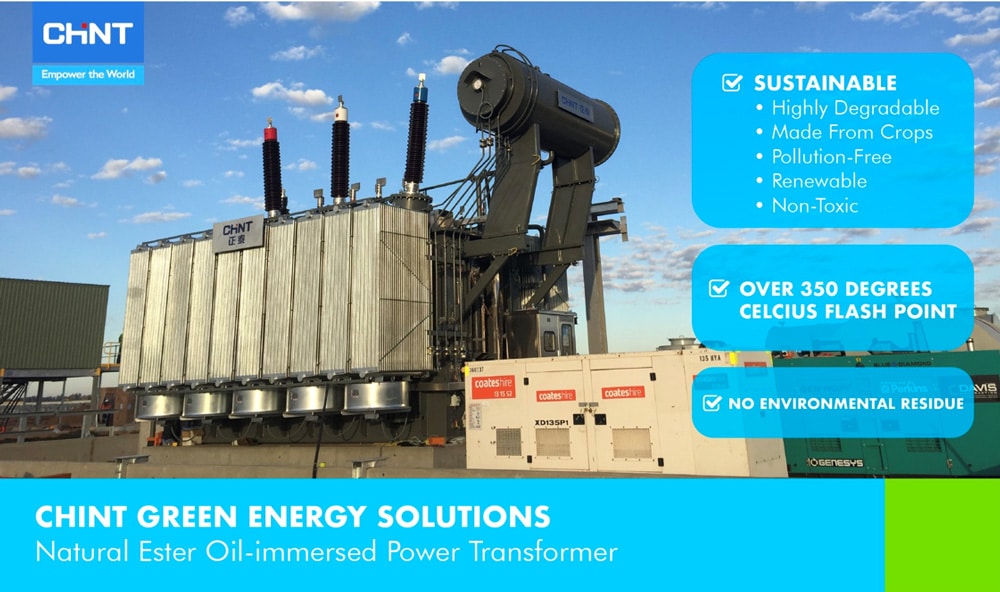Oil-immersed power transformers have many benefits, particularly their efficient cooling capabilities. They are used in many industries and can be found at both electrical substations and power distribution centers. Read on to learn more about oil-filled transformers and how they may be useful to you.
What Is an Oil-Immersed Transformer?
Transformers change an alternating current (AC) to a higher or lower voltage. A current may need to move to a higher voltage as higher voltages are easier and faster to transport. A current may need to decrease its voltage in residential, commercial, and industrial areas.
One type of transformer is an oil-immersed transformer. Transformers often operate in high-energy, high-heat situations. An oil-filled transformer suspends the transformer of a steel tank filled with oil. The oil cools and insulates the transformer. The device uses convection to move the oil around and through the transformer, cooling it off.
To avoid oil deterioration, transformer oil must be kept at an operating temperature of less than 85°C. For the transformer to run correctly and to prevent excessive oil deterioration, the daily average operating temperature should be around 30°C.
Oil-immersed Transformer: Working Principle
Substations and power distribution areas use oil-immersed transformers. An oil-immersed transformer is similar in design to a regular transformer. It’s made up of three main parts: a magnetic core at the center that is surrounded by coils and bushings.
The magnetic core and windings create a magnetic field, allowing the current to pass through. Windings are insulated, with higher voltages needing thicker insulation. Bushings transmit the electricity to its next destination, typically a substation.
Oil-filled transformers change a current to a higher or lower voltage using the principle of induction. This process creates a surplus of heat. The oil helps to keep the transformer from overheating.
The windings and core are submerged in transformer oil. It acts as a cooling agent and an insulator. Convection moves the oil through the windings, coils, and core, keeping the transformer from overheating. Oil is further cooled externally at lower voltage and in an air-cooled radiator with higher voltages.
Types of Oil-Filled Transformers
There are several types of oil-filled transformers. Here are a few of the most common below.
- Single-phase transformers use one pair of windings. It’s used in lower-load situations, such as rural areas.
- Three-phase transformers are made up of three pairs of windings. The windings typically go around a core sectioned into three parts. Three-phase transformers are used in higher-load areas and can supply three circuits with energy.
- Power transformers are designed to handle much higher loads. They can step voltages up or down and transmit a current from one place to another.
- Distribution transformers transmit lower voltages from the electrical grid to homes and businesses. They are much smaller than power transformers.
- Pole-mounted transformers are connected to an electrical pole.
- Pad-mounted transformers are mounted to a concrete pad on the ground.
Advantages of Oil Immersed Transformer
Contractors typically have to choose between oil-filled and dry-type transformers. Both have their advantages. Let’s delve into some of the reasons that an oil-filled transformer may be the right choice for you.
First, oil-filled transformers are more affordable. They are often up to half the price of a dry-type transformer with the same capacity.
Oil-immersed transformers tend to be more successful at cooling the transformer than a dry type. Oil is a better cooling medium. They also have a higher voltage capacity. Dry-type transformers operate below 35 kV, while there are no limits with oil-immersed. Oil transformers are more versatile.
Dry-type can typically go from an intermediate location to the power consumption source. Oil-immersed can function as both power and distribution transformers.
Oil-filled transformers are better for the environment, as they are much easier to recycle than dry-type. They are also smaller and work best in outdoor environments in case of an oil spill or other accident.
Maintenance and Safety Considerations for Oil-Immersed Transformers
Oil-immersed transformers have maintenance and safety considerations. Keeping your transformer well-maintained can lengthen its lifespan and reduce the risk of safety issues.
You should perform regular visual inspections and cleanings. Check the transformer to ensure that all parts are in good condition and that there is no threat of leaks. Make sure that all fittings are tight. Clean the exterior and interior of the transformer to remove dust, dirt, and other debris.
It’s also essential to check the oil frequently. Make sure that the oil is at its proper level. You should also take samples of the oil and have it tested. You don’t want to use contaminated oil. Finally, keep an eye on the temperature and air pressure. You want to be sure that the transformer is within the suggested levels.
As with any electrical equipment, there is always a risk of fire. In the event of a fire, it’s important to ensure that the oil doesn’t leak out from the transformer. Oil can cause the fire to spread, making a hazardous situation even more dangerous.
Conclusion
Oil-immersed transformers provide many benefits and are often a better choice than dry-type transformers. They are efficient and affordable and can run at almost any capacity. While they do require maintenance and pose some safety risks, with the proper care and use, you’ll be able to get the most out of your equipment.
Chint Global is dedicated to providing high-quality electrical equipment for your business needs. We offer several safe and reliable oil-immersed transformers to fit a variety of situations. Contact one of our expert representatives today to help you choose the best transformer for your needs.
FAQ about Oil-Immersed Transformer
How is it different from a dry-type transformer?













